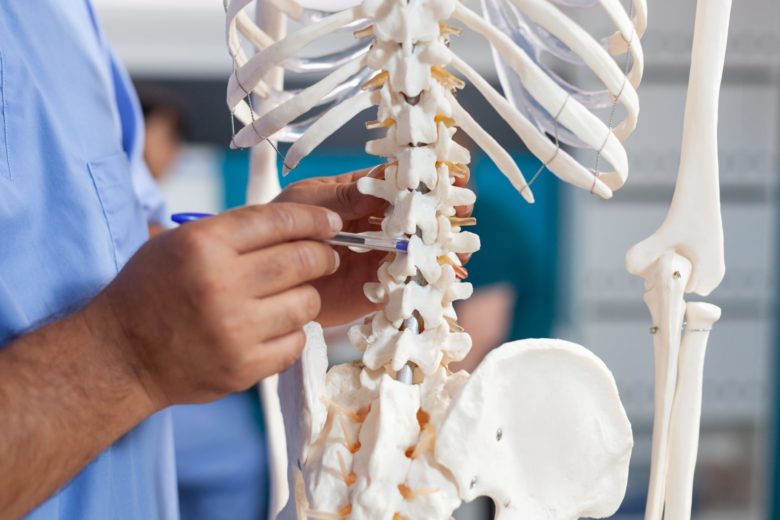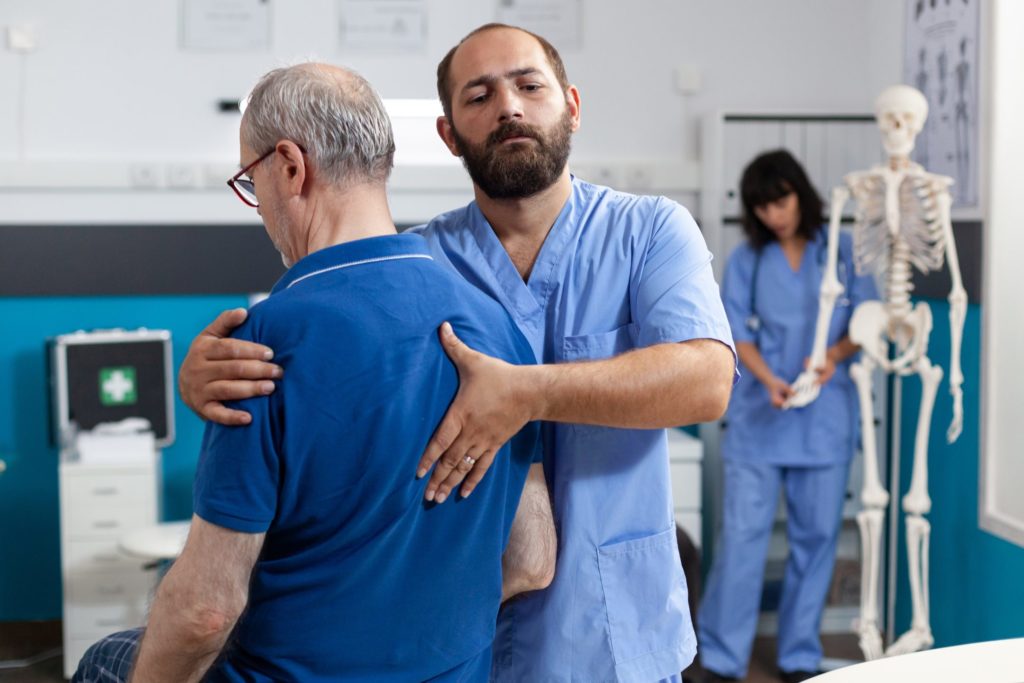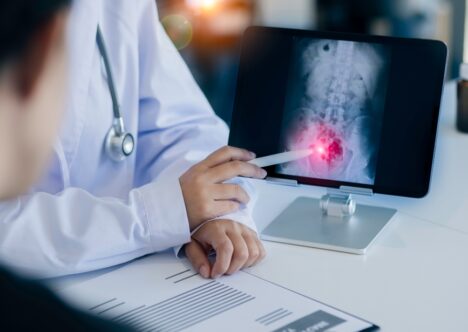Use our convenient online scheduler to book an appointment now.

Spinal disorders like sciatica, herniated discs, and thoracic spondylosis have enormous economic and psychosocial effects. Because the spine is highly interconnected with the rest of the body, any problems with it can result in many different symptoms and impact a patient’s ability to function on multiple levels.
Some key statistics about spine and back conditions include:
- 80% of Americans will experience back pain at some point in life
- In 2017, back pain was the leading cause of disability worldwide
- Americans spend at least $50 billion annually on treating back pain
What Are Some Common Spine Conditions?
Spine conditions, including thoracic spondylosis, can cause painful symptoms depending on which region of the spine (cervical, thoracic, lumbar, or sacral spine) is affected.
Common spine conditions and injuries include:
- Herniated discs
- Lumbar spinal stenosis
- Scoliosis
- Thoracic spondylosis
- Spinal cord compression
- Spinal nerve compression
- Spinal deformity
- Spinal fractures
- Spinal tumors
What Are the Causes and Symptoms of Spinal Conditions?
Accidents, falls, and lifting heavy objects are the most common causes of sudden––also referred to as acute––back injuries. Sports like golf, volleyball, and gymnastics can cause back pain, but this type is usually gradual. The same can be said of spine conditions caused by poor sleeping positions or repetitive motions at work.
Spine problems can also result from large nerve root irritation, smaller nerve pinching that extends out from the vertebrae, straining of the large back muscles, or injury to the bones or ligaments in or around the spine.
Your spinal cord carries nerve impulses throughout your body, making spine conditions like thoracic spondylosis something that can have a profound effect on the rest of your body.
Symptoms of a spinal condition may include:
- Sharp, dull, or aching back/neck
- Bladder or bowel dysfunction
- Radiating pain in the arms or legs
- Stiffness or tightness
- Tingling feeling in the arms or legs
What Are Common Treatment Options For Spinal Injuries?
To determine whether you have suffered from a spinal injury, your doctor will consider two factors: the nature of your injury and the presence of symptoms. Diagnostic testing is usually necessary only when the pain has been present for more than two weeks and has not improved.

If symptoms are persistent, tests such as an X-ray, MRI, CT Scan with 3-D reconstruction, or EMG/NCV neurophysiologic testing of nerves may be ordered by your doctor.
As much as possible, the goal of treatment is to avoid surgery. Pain medications and physical therapy may be able to help you better manage symptoms in the short term.
Like many conditions affecting the back and spine, conservative measures should be explored first. These may include exercises to improve posture, range of motion, muscle flexibility, core strength, spine muscle strength, weight management, circulation, and overall fitness.
Specific exercises for conditions such as thoracic spondylosis can be done from home through telemedicine or with the help of a physical therapist.
More advanced treatments for spinal conditions can be explored if these first-line measures are ineffective and you still don’t have relief. Depending on your specific condition, these may include:
- Lumbar decompression. During a lumbar decompression, a small portion of the bone that’s compressing your nerve root is removed to alleviate pain.
- Spinal injections
- Minimally invasive spine surgery. Utilizes muscle-sparing techniques to minimize or eliminate tissue disruption to optimize your outcome while minimizing the risk of future problems.
- Disc replacement. This procedure is for severely damaged intervertebral discs. Damaged discs are replaced with artificial ones, which function like natural discs and allow movement/motion between the vertebrae.
- Robotic spinal surgery. The use of robotics during spine surgery may be needed in certain cases. This technology can help reduce pain and speed up recovery time.
- Scoliosis surgery
- Cervical fusion and lumbar fusion. During a cervical fusion, two or more vertebral bones in the neck are fused to limit mobility and the resulting pain.
Resolving Serious Spinal Issues
As a leading provider of high-quality, state-of-the-art spinal care and minimally invasive spine surgery for patients throughout the Commonwealth of Virginia, the orthopedic surgeons at Town Center Orthopaedics evaluate each unique case with the duty, care, and attention you deserve. Our patient-centered approach means that you will be involved in every step of the process to ultimately achieve the best outcome for you.
Our caring practitioners understand the anxiety and discomfort related to living with a painful condition and aim to bring you relief as quickly as possible at one of our renowned spine and sports injury centers.
To determine if you are a candidate for spine treatment or to schedule your appointment, call Town Center Orthopaedics any time at (571) 250-5660, or request an appointment today.
Join our Mailing List
TCO provides patients with orthopedic problems the trusted resources and patient-centered advice they need to “Feel Better. Move Better. Be Better.”
© 2024 Town Center Orthopaedics | All Rights Reserved


